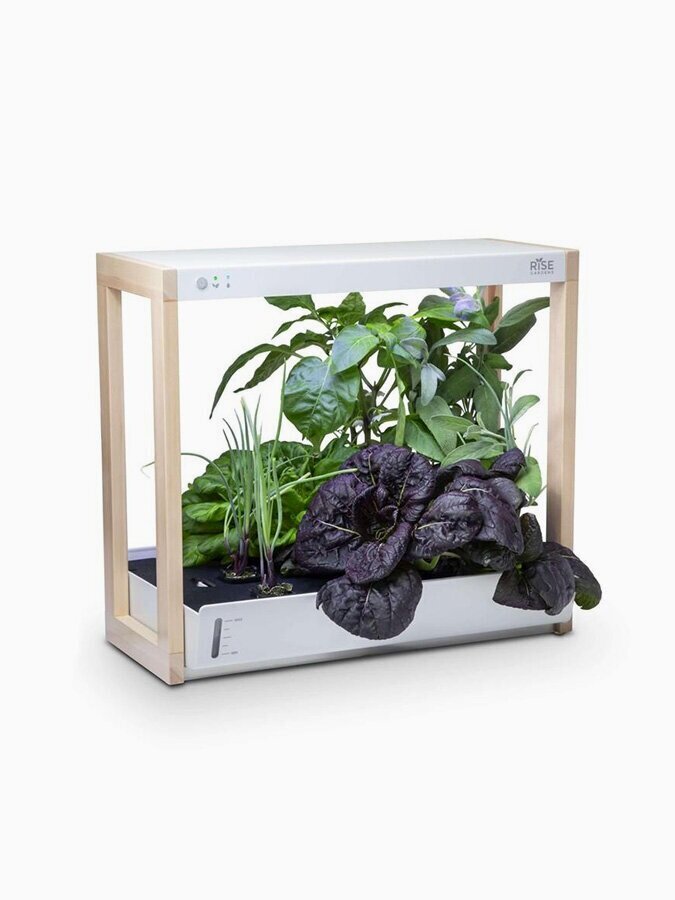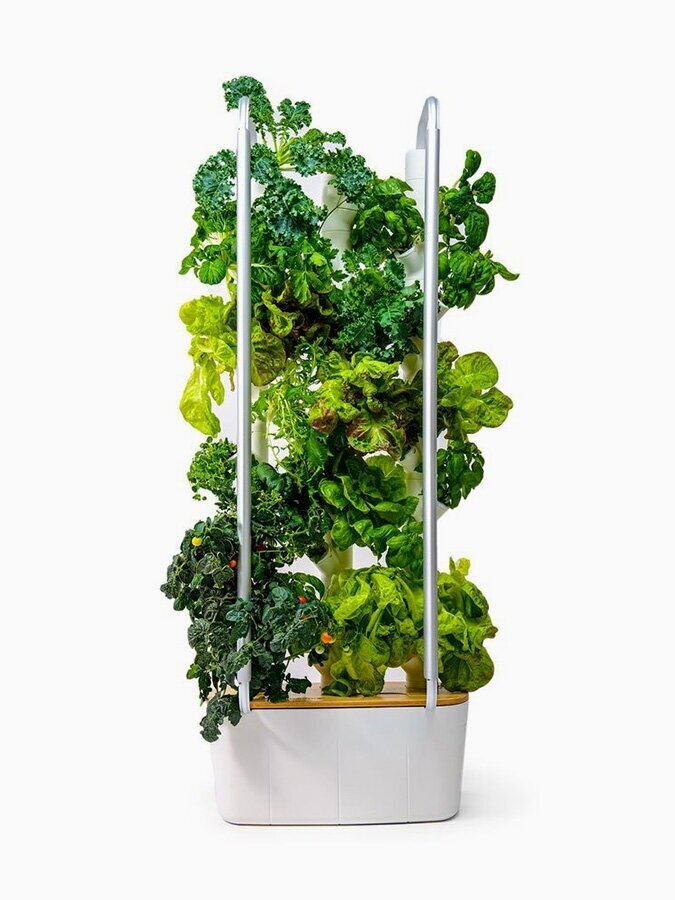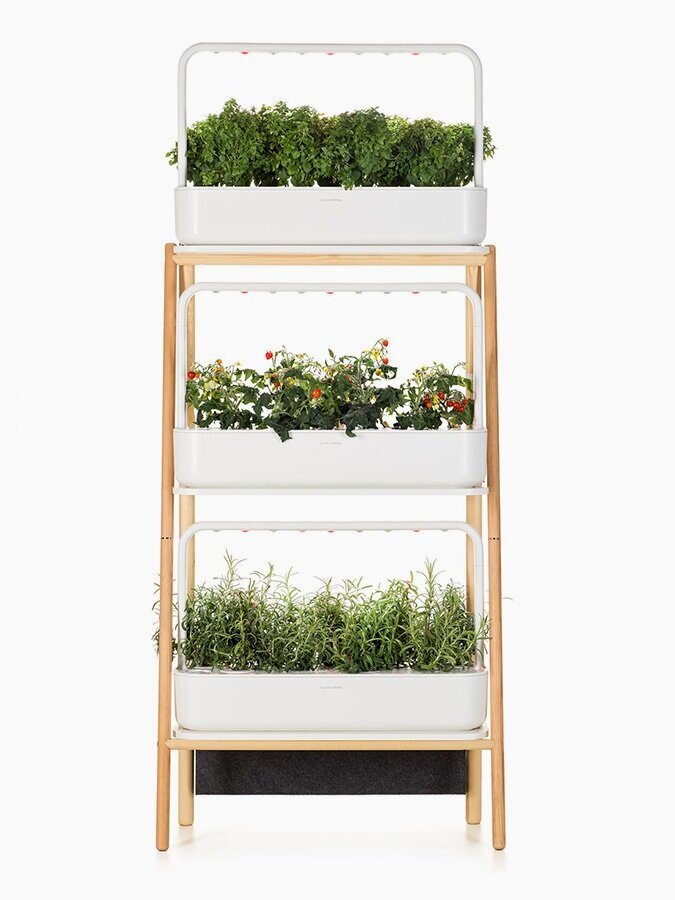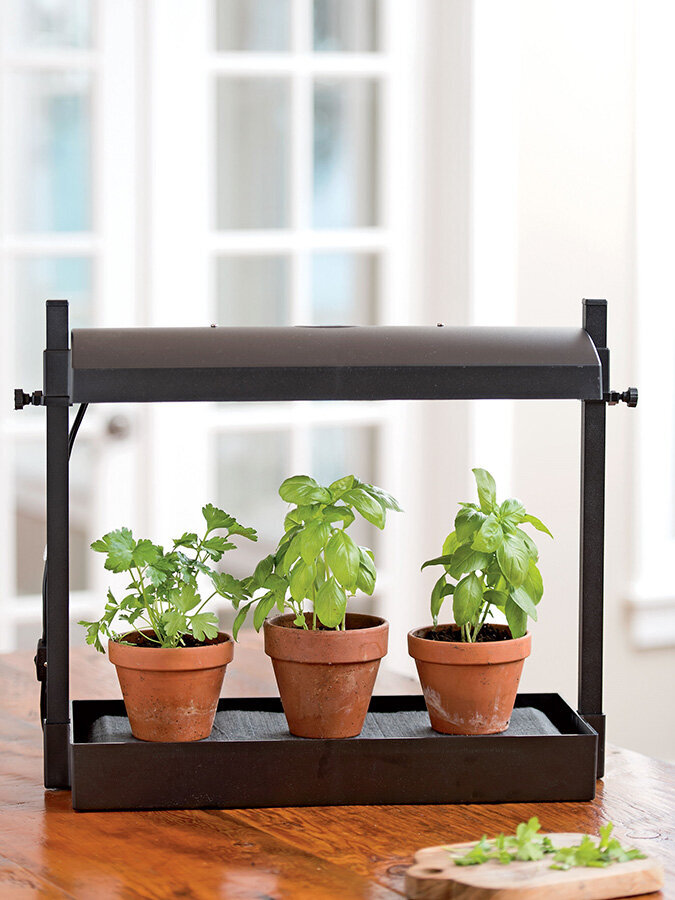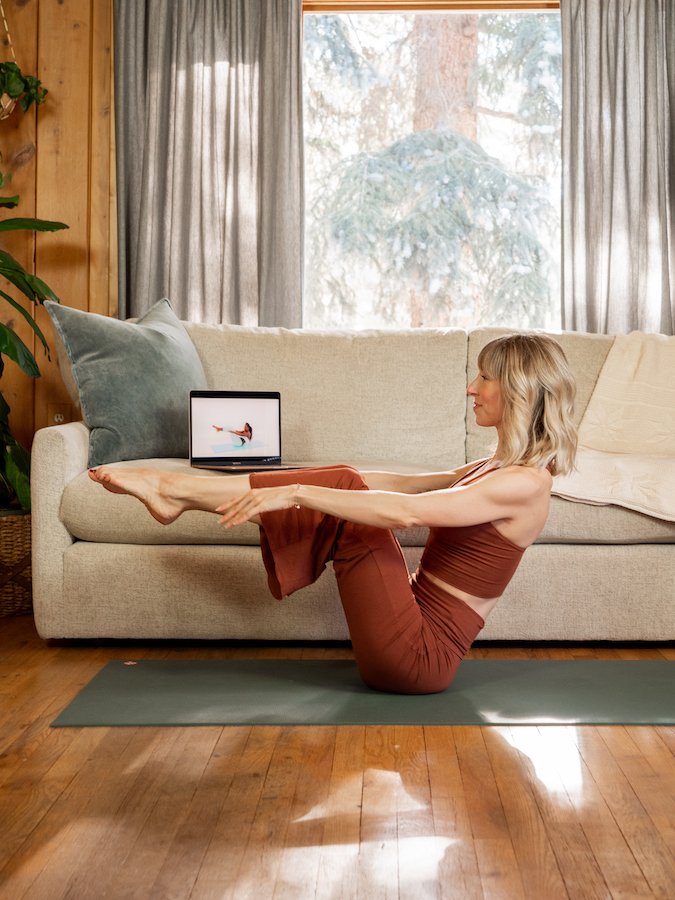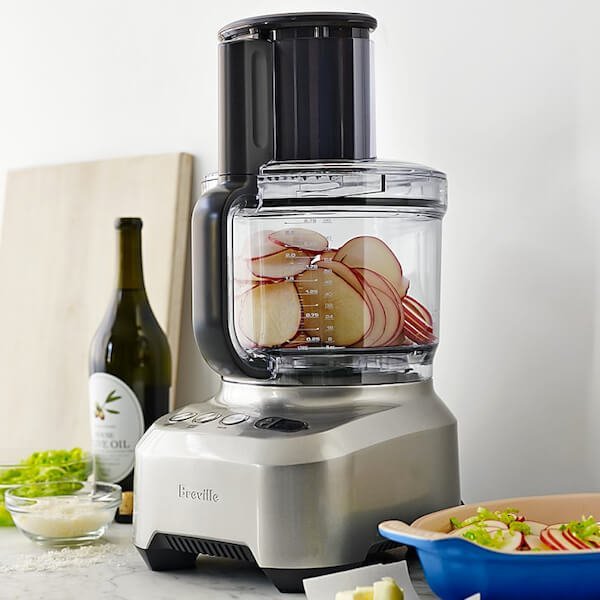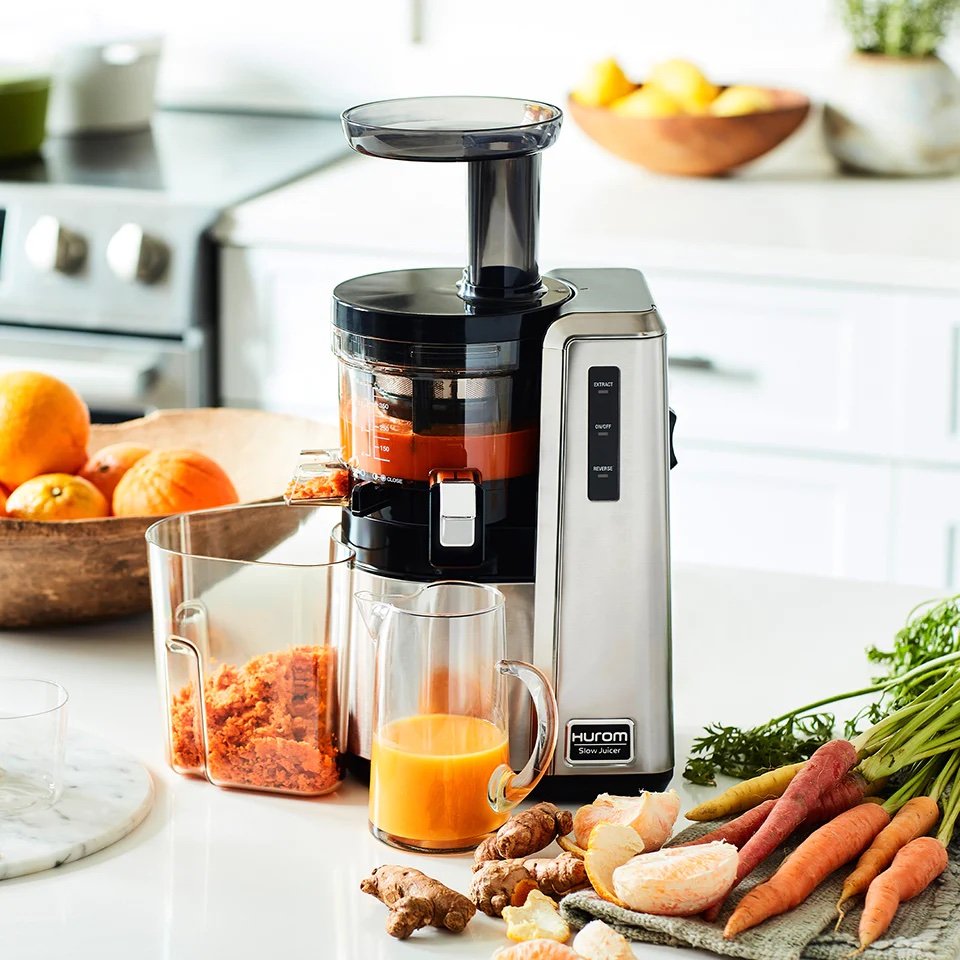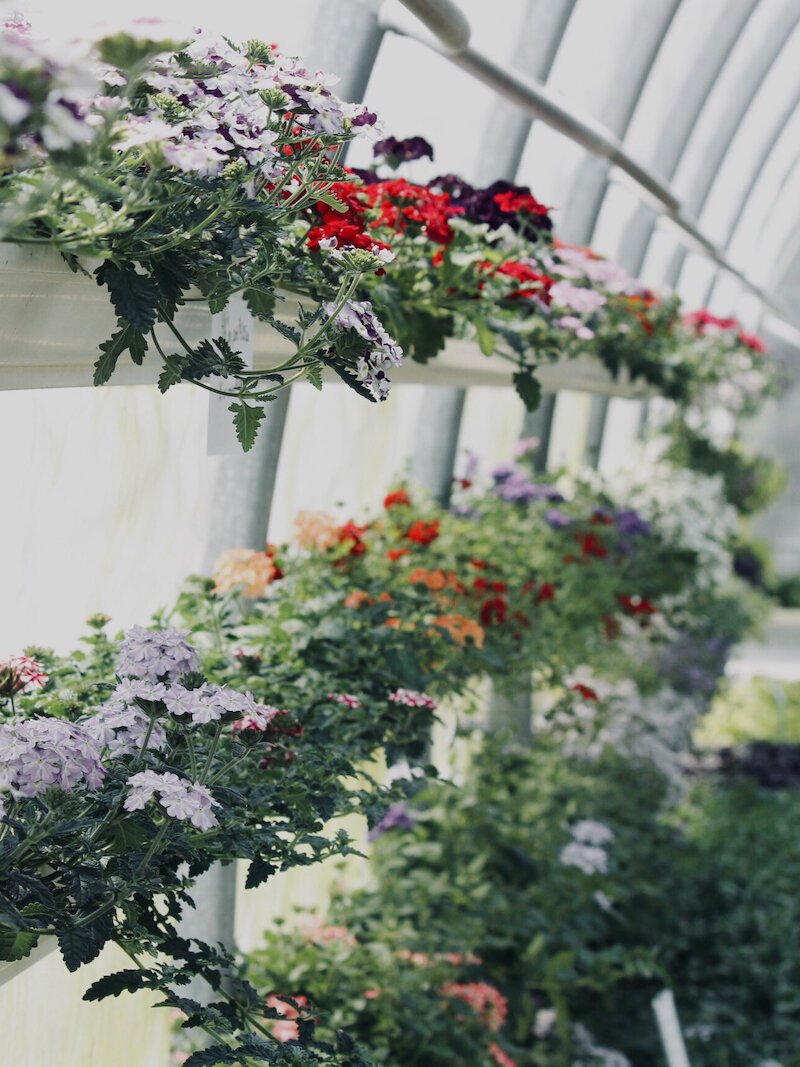
5 Vertical Gardens For The Casual Indoor Gardener
Plants everywhere, please.
I’m moving into a new space this month—the first apartment I’ve ever had with abundant natural light. My vision incorporates color and lots and lots of plants. Edible greens, “don’t eat that!” plants, and maybe some fake foliage for extra impact without extra work.
But I’m also not exponentially increasing my square footage; it’s still only one bedroom in the heart of Los Angeles, so floor space is limited. With all this natural light, though, I’m invigorated by the idea of covering my walls with vines and hanging herbs in the kitchen windows. That is to say, let’s get vertical, baby! (With an indoor garden.)
“Vertical gardens make a vibrant addition to homes and apartments without taking up valuable space.”
Whether you’re a seasoned pro or just noticing a greenish tint to your thumb, vertical gardens make a vibrant addition to homes and apartments without taking up valuable space. If you’re considering one plant (or a hundred) this season, here’s your guide to getting started—including a primer on what types of growing methods are available. (Some of them don’t even require soil.)
Or, if you’re looking for greenery without as much hassle, build your own indoor oasis with these websites where you can order houseplants straight to your door.
Which type of indoor garden is best?
Unless you’re going for air plants all around, you’re going to need a growing medium—i.e., where the plant will grow its roots. Here’s a quick primer on the best indoor growing mediums and the pros and cons of each.
SOIL
The classic growing medium! Soil is lower maintenance and requires no additional technology (as long as you have plenty of natural light). It’s also more affordable up-front to pick up a bag of soil and cute planters than it is to invest in other specialty vertical gardening appliances.
Try to avoid peat-based soil, which is less sustainable than other organic composts and mediums like coconut coir, perlite, and charcoal. You can even compost at home (here is the how-to, and here are small space-friendly compost bins).
“It’s more affordable up-front to pick up a bag of soil […] than it is to invest in other specialty vertical gardening appliances.”
If you opt for soil, know that having many plants can get a little heavy—so plan accordingly. Hang pots individually from the ceiling, and make sure you find studs when securing planters to your walls (tips here, or invest in a stud finder). A secondhand wire shelf, kitchen stand, or bookshelf can be equally stunning without being too imposing.
Soil can be messy (especially if you have curious pets), and there is the chance for mold to grow in overwatered, under-drained plaints. Although, whenever you’re dealing with plants that require any sort of water or humidity, you can run into this issue no matter which growing medium you use.
HYDROPONIC
Growing plants in a hydroponic system means no soil. This encourages greater growth (because plants don’t have to fight through soil to establish root systems) and higher yields based on factors that are more inside your control, like added nutrients and strategic lighting. Have you ever propagated a pothos plant by sticking a cutting in water? That’s basic hydroponics!
It’s not a new-fangled technology, only a refined one (the Hanging Gardens of Babylon and Aztec chinampas allegedly used principles from hydroculture). These days, hydroponic gardening can range from scrappy DIY projects to ultra-high-tech investments.
“Hydroponic growing holds a lot of promise—especially in fresh food-scarce areas or places with difficult weather patterns or depleted soils.”
But hydroponic growing holds a lot of promise—especially in fresh food-scarce areas or places with difficult weather patterns or depleted soils. It also uses less water since you’re only watering roots instead of the additional dirt around the plant.
There are several different approaches, depending on your resources. Here are a few that may work for your indoor garden—all are based on recirculating the same water, with the occasional nutrient refill and water replacement.
Ebb and flow systems are designed so water and nutrients flood a basin of plants potted in non-soil mediums and wire baskets, then drain out to expose the root systems to oxygen.
The nutrient film technique uses gravity as well, this time with a sloped pipe. Water and nutrients continuously trickle down past root systems into the drainage container and recirculate.
Aeroponics features a constant, fine spray, meaning that roots get oxygen, nutrients, and water all at once. This has a high yield but also has the highest risk if there’s a mechanical failure. It’s especially efficient at rapid propagation.
Aquaponics can use some of the techniques above, but instead of purchasing nutrients, the water reservoir houses fish. Feed the fish, the fish waste circulates up through the plants as fertilizer, and the plants clean the water for the fish. (Uh, yes, please?!)
If you’re going the hydroponics route or don’t have ample daylight, it may be smart to invest in a grow light. And that’s the biggest drawback of hydroculture at home—the cost. From nutrients to seeds or seedlings to growing mediums and lights, this can get pricey. The good news is, it’s effective and consistent for growing your own food so that you can offset a little bit of your grocery bill.
What if I want to do it myself?
Before you hit “Add to Cart” on any of the soil- or hydro-based systems below, consider what you already have in your home.
If you have plastic bottles on hand (hey, it happens), you can take some inspiration from window farms and upcycle them into a vertical garden. While not ideal for fastening to drywall because of the adjacent moisture, you can hang them from your windows and grow small perennials and even herbs. Reduce the strain on the strings (and the ceiling) by mixing in lightweight and absorbent perlite or vermiculite, or look for potting soil that contains them. If you don’t have bottles on hand, consider investing in wall-mounted containers like these recycled ones from WallyGro.
“Prioritize ways you can upcycle materials, recirculate water, and maximize the natural resources you have on hand.”
You can DIY a hydroponic system with budget materials, like an aquarium pump from a local pet supply store and some additional components. Or get crafty with HGTV’s guide to creating a vertical soil-based garden out of PVC pipes. Apartment Therapy has excellent visual inspo, including the aforementioned shelves and bottles designs (I’ve got my eye on the kitchen rack approach!)
In general, prioritize ways you can upcycle materials, recirculate water, and maximize the natural resources you have on hand (hiii, sunshine). But if you can’t DIY, no problem—the brands below are offering pre-made gardens so you can get growing.
Indoor gardens you can order today
1. Lettuce Grow
Price | Starting at $348
Shipping | United States
Lettuce Grow’s vertical hydroponic garden, The Farmstand, uses 95 percent less water than a soil-based equivalent and is made from ocean-bound plastic. This self-watering and self-fertilizing stand is available in sizes that accommodate 12 to 36 plants, and if you want to grow indoors, the brand offers grow lights, too. All The Farmstand requires is upkeep once a week and a seasonal reset—and you’re good to grow! Payment plans are available.
Shop Lettuce Grow
2. Rise Gardens
Price | Starting at $279
Shipping | United States
One of the most aesthetically pleasing units on this list, Rise Gardens is a hydroponic growing system that can support growing food for individuals, couples, and even multiple families. Rise Gardens offers an easy-to-use app and subscription options for nutrients and seed pods so you can streamline your growing year-round. With options to grow between eight and 36 plants, you’ll be able to grow shelf-to-table no matter how many people you’re feeding.
Shop Rise Gardens
3. Gardyn
Price | Starting at $899
Shipping | United States
If you want to get straight to growing (without building a system from scratch), Gardyn’s home kit is about as plug-and-play as it can get. Using a “hybroponic” method that combines hydroponic and aeroponic growing, this device can grow up to 30 large plants simultaneously in just two square feet. It does come with a higher price tag, so Gardyn is best for people looking to get serious about offsetting their grocery costs by growing food at home. All of Gardyn’s seeds are organic, non-GMO, and sourced from the United States, too!
Shop Gardyn
4. Click & Grow
Price | Starting at $99.95
Shipping | United States, Canada, Europe, parts of Asia (see all here)
Click & Grow’s Smart Garden was designed with city dwellers in mind. Designed to work “like a capsule coffee machine, but for plants,” the seed pods come pre-filled with all the nutrients and growing medium you’ll need. Ranging from small tabletop herb gardens to wall farms fit for feeding the whole family (and then some), Click & Grow makes hyperlocal produce a reality. And if you need help troubleshooting? Click & Grow’s “ask a gardener” support section will ensure you get the help you need.
Shop Click & Grow
5. Gardener’s Supply
Price | Varies by need
Shipping | United States
If you’re looking for an indoor garden that lies at the intersection between DIY and all-in-one, Gardener’s Supply offers individual pieces to suit the needs of your space. You can find plant stands, grow lights, and shelving suited for indoor soil-based gardening (perfect for building your own custom setup). This certified B Corp is also 100 percent employee-owned and regularly gives back through grants, donations, and volunteer hours.
Shop Gardener’s Supply
The Good Trade editors endorse products we genuinely love. If you end up making a purchase through one of our affiliate links, we may earn a commission. Learn more here.
RELATED READING
Emily Torres is the Managing Editor at The Good Trade. Born and raised in Indiana, she studied Creative Writing and Business at Indiana University. You can usually find her in her colorful Los Angeles apartment journaling, caring for her rabbits, or gaming. Read more of her creative writing over on Notes To Self!


